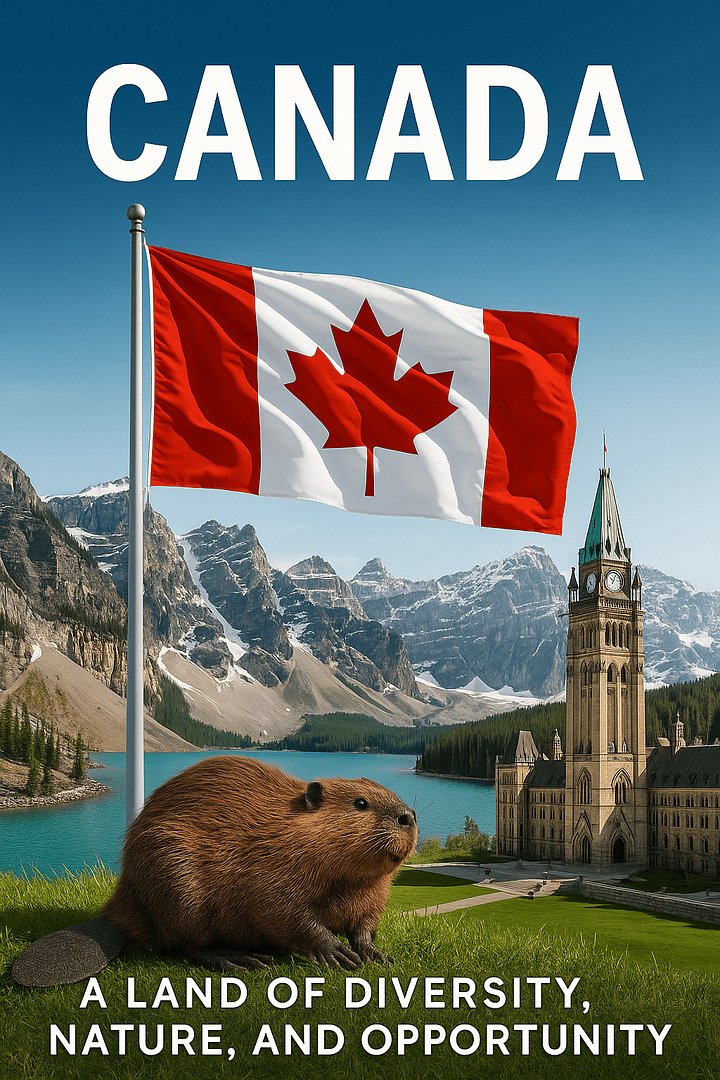Canada, the second-largest country in the world by land area, is renowned for its natural wonders, multicultural population, and progressive values. Stretching from the Atlantic to the Pacific and up into the Arctic Circle, Canada is as geographically diverse as it is culturally rich. This article explores Canada’s landscapes, cities, society, and role on the global stage. Canada’s geography is one of its defining features. The country is home to the Rocky Mountains, vast forests, thousands of lakes, and Arctic tundras. National parks like Banff and Jasper attract millions of visitors annually. Canada’s commitment to environmental protection has made it a leader in conservation efforts, although balancing resource extraction and ecological responsibility remains a challenge. Canada’s cities reflect its diversity and modern infrastructure. Toronto, the largest city, is a financial and cultural hub. Vancouver offers stunning coastal views and access to outdoor adventure. Montreal blends French and English influences, while Ottawa serves as the nation’s political center. Each city offers a high standard of living, vibrant arts scenes, and growing job markets. Canada is a multicultural mosaic. With two official languages (English and French) and a long history of immigration, the country embraces diversity. Indigenous cultures remain an essential part of Canadian identity, with increased efforts toward reconciliation and recognition. The nation is known for politeness, inclusion, and social equality. Canada boasts a world-class education system. Universities like the University of Toronto, McGill, and UBC rank among the best globally. The country emphasizes research, innovation, and accessibility. International students flock to Canada for its quality education and post-graduate opportunities, often leading to permanent residency pathways. Canada’s economy is one of the most stable in the world. It is rich in natural resources—oil, timber, minerals—and also excels in technology, agriculture, and manufacturing. The service sector, including finance and healthcare, dominates. Trade relationships with the U.S., China, and the EU are vital, and the country is a member of multiple economic alliances like NAFTA/USMCA and the G7. Canada operates as a parliamentary democracy with a constitutional monarchy. It is internationally respected for its human rights advocacy, peacekeeping missions, and climate commitments. Though debates around Indigenous rights, immigration, and climate policy remain, Canada is often viewed as a model of democratic governance and global cooperation. Immigration is central to Canada’s growth strategy. The country welcomes hundreds of thousands of new residents annually through various skilled-worker, refugee, and family programs. The Canadian citizenship process is transparent, and newcomers often find strong support in integrating into society. The multicultural framework allows people to preserve their identity while becoming active members of Canadian life. Like any nation, Canada faces challenges: housing affordability, climate change, Indigenous reconciliation, and economic diversification are key issues. However, its strong institutions, innovation, and values position it well for the future. With its aging population, Canada continues to rely on immigration and forward-thinking policies to remain competitive and inclusive. Canada stands as a beacon of hope, opportunity, and natural beauty. From bustling cities to quiet forests, from welcoming communities to cutting-edge innovation, it offers a unique and powerful blend of the traditional and the progressive. As the world changes, Canada’s commitment to inclusion, peace, and sustainability makes it a country worth understanding—and visiting.Introduction
Geography and Environment
Major Cities and Urban Life
People and Culture
Education and Innovation
Economy and Industry
Politics and Global Role
Immigration and Citizenship
Challenges and Future Outlook
Conclusion

